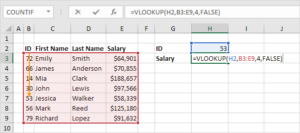A Comprehensive Guide to Creating Your Own YouTube Channel

Introduction: In the digital era, YouTube has emerged as a powerhouse platform for content creators, offering an unparalleled opportunity to share your voice, passion, and creativity with a global audience. Whether you aspire to become a vlogger, educator, entertainer, or entrepreneur, creating a YouTube channel serves as the first step towards building your online presence and connecting with like-minded individuals around the world. In this comprehensive guide, we’ll walk you through the step-by-step process of creating your own YouTube channel, from setting up your account to optimizing your content for success.
Chapter 1: Getting Started 1.1 Choosing Your Niche: Define your interests, expertise, and target audience to determine the focus of your YouTube channel. 1.2 Researching Your Market: Explore existing channels in your niche to identify opportunities, trends, and gaps in the market. 1.3 Crafting Your Channel Identity: Develop a unique brand identity, including your channel name, logo, and channel art, to distinguish yourself from competitors.
Chapter 2: Setting Up Your YouTube Channel 2.1 Creating a Google Account: If you don’t already have one, sign up for a Google account, which will serve as the foundation for your YouTube channel. 2.2 Accessing YouTube Studio: Navigate to YouTube Studio, the platform’s creator dashboard, where you’ll manage your channel settings, content, and analytics. 2.3 Creating Your Channel: Click on the “Create” button in YouTube Studio and follow the prompts to set up your channel, including choosing a name and custom URL.
Chapter 3: Customizing Your Channel 3.1 Uploading Channel Art: Design a compelling banner and profile picture that reflects your brand and captures viewers’ attention. 3.2 Writing Your Channel Description: Craft a concise and engaging channel description that introduces yourself, your content, and what viewers can expect from your channel. 3.3 Adding Links and Contact Information: Include links to your website, social media accounts, and business email address to encourage engagement and collaboration.
Chapter 4: Understanding YouTube Policies and Guidelines 4.1 Reviewing Community Guidelines: Familiarize yourself with YouTube’s community guidelines to ensure that your content complies with the platform’s standards. 4.2 Learning About Copyright: Understand copyright laws and YouTube’s policies regarding the use of copyrighted material to avoid copyright strikes and content removal. 4.3 Exploring Monetization Requirements: Learn about YouTube’s monetization policies, including eligibility requirements, ad revenue sharing, and monetization features such as Super Chat and channel memberships.
Chapter 5: Creating Your First Video 5.1 Brainstorming Video Ideas: Generate ideas for your first video based on your niche, audience preferences, and trending topics. 5.2 Planning Your Video: Outline your video’s structure, script, and key points to ensure clarity, coherence, and engagement. 5.3 Filming and Editing: Record your video using a camera or smartphone and edit it using video editing software such as Adobe Premiere Pro, iMovie, or DaVinci Resolve.
Chapter 6: Uploading and Optimizing Your Video 6.1 Uploading Your Video: Navigate to YouTube Studio and click on the “Upload” button to upload your video file. 6.2 Adding Title, Description, and Tags: Write a compelling title, detailed description, and relevant tags to optimize your video for search and discovery. 6.3 Customizing Thumbnails: Design a captivating thumbnail image that accurately represents your video and entices viewers to click.
Chapter 7: Promoting Your Channel 7.1 Sharing on Social Media: Share your videos on social media platforms such as Facebook, Twitter, and Instagram to reach a wider audience. 7.2 Engaging with Viewers: Respond to comments, questions, and feedback from your viewers to foster a sense of community and connection. 7.3 Collaborating with Other Creators: Collaborate with other YouTubers in your niche to cross-promote each other’s channels and expand your reach.
Chapter 8: Analyzing Performance and Iterating 8.1 Monitoring Analytics: Track key metrics such as views, watch time, and audience retention using YouTube Analytics to gain insights into your channel’s performance. 8.2 Experimenting with Content: Test different video formats, topics, and styles to identify what resonates most with your audience and optimize your content strategy accordingly. 8.3 Iterating and Improving: Continuously review and refine your channel based on viewer feedback, market trends, and performance data to grow your audience and achieve your goals.
Conclusion: Creating a YouTube channel is not just about uploading videos; it’s about building a community, sharing your passion, and making a meaningful impact. By following the steps outlined in this guide, you’ll be well-equipped to embark on your YouTube journey and unlock the full potential of your creativity and talent. So go ahead, take that first step, and join the thriving community of content creators on YouTube. Your audience is waiting!




